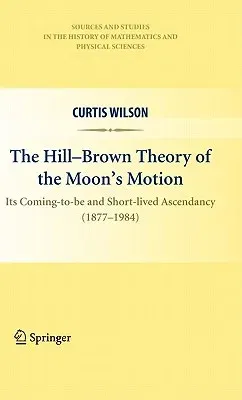Curtis Wilson
(Author)The Hill-Brown Theory of the Moon's Motion: Its Coming-To-Be and Short-Lived Ascendancy (1877-1984)Hardcover, 21 June 2010

Qty
1
Turbo
Ships in 2 - 3 days
In Stock
Free Delivery
Cash on Delivery
15 Days
Free Returns
Secure Checkout

Part of Series
Sources and Studies in the History of Mathematics and Physic
Part of Series
Sources and Studies in the History of Mathematics and Physical Sciences
Print Length
323 pages
Language
English
Publisher
Springer
Date Published
21 Jun 2010
ISBN-10
144195936X
ISBN-13
9781441959362
Description
Product Details
Author:
Book Format:
Hardcover
Country of Origin:
NL
Date Published:
21 June 2010
Dimensions:
24.13 x
16.13 x
2.34 cm
ISBN-10:
144195936X
ISBN-13:
9781441959362
Language:
English
Location:
New York, NY
Pages:
323
Publisher:
Series:
Weight:
458.13 gm